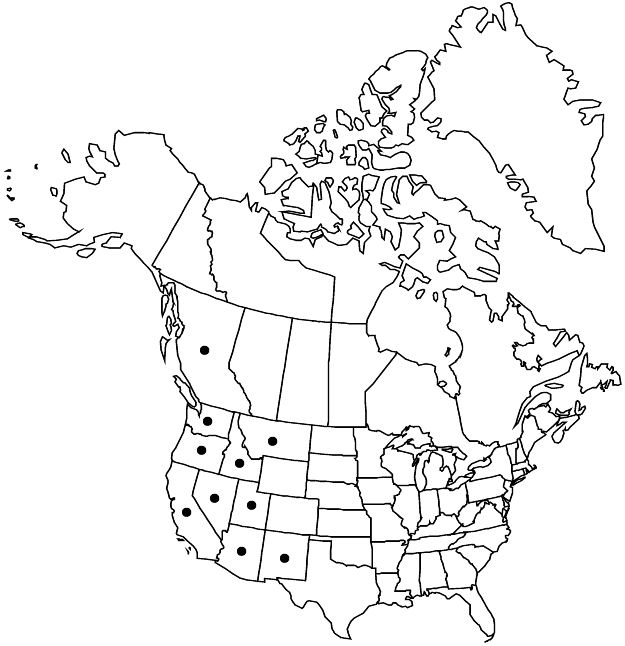Prunus emarginata
Man. Bot. ed. 7, 463. 1836.
Shrubs or trees, often suckering, 10–150 dm, not thorny. Twigs with terminal end buds, glabrous or hairy. Leaves deciduous; petiole 3–12 mm, glabrous or hairy, usually eglandular, rarely glandular distally, glands discoid; blade elliptic, oblong, oblanceolate, or obovate, (1.5–)2–6(–8) × 1–3(–4.2) cm, base cuneate, margins crenate to serrate, teeth blunt, glandular, apex usually rounded to obtuse, rarely acute, surfaces glabrous or downy, abaxial often hairier. Inflorescences (3–)6–12-flowered, corymbs or racemes; central axes (5–)9–30 mm. Pedicels 3–12(–18) mm (subtended by leafy bracts), glabrous or hairy. Flowers blooming at leaf emergence; hypanthium obconic, 2.5–3 mm, glabrous or hairy externally; sepals reflexed, oblong, 1.5–2 mm, margins entire, surfaces usually glabrous, sometimes hairy abaxially; petals white, elliptic to obovate, 3–8 mm; ovaries glabrous or with scattered hairs. Drupes bright red, globose to ovoid, 7–14 mm, glabrous; mesocarps fleshy; stones ellipsoid, not flattened.
Phenology: Flowering Apr–Jul; fruiting Jun–Sep.
Habitat: Gravelly or sandy soil along streams, rocky mountain slopes, subalpine, thickets on exposed sites, cutover and burned areas, understory of conifer and oak forests
Elevation: 0–3000 m
Distribution

B.C., Ariz., Calif., Idaho, Mont., Nev., N.Mex., Oreg., Utah, Wash., Mexico (Baja California).
Discussion
H. J. Scoggan (1978–1979, part 3) included Prunus emarginata within P. pensylvanica. Given that much of the problem of separating P. emarginata from P. pensylvanica arises from intermediate plants found in British Columbia and western Montana where the ranges of the two species meet, this makes some sense from a Canadian perspective. When viewed from a continental perspective, P. emarginata normally does not look much like P. pensylvanica (see notes on their differences under 10. P. pensylvanica).
Individuals of Prunus emarginata vary considerably in their habit, size and shape of leaves, and indument on branchlets, inflorescences, and leaves. Many segregate species have been described based on this variation. Most often, western botanists have recognized one species with two varieties based on habit or indument; those characters are not well correlated. Some keys use habit to separate the varieties (var. emarginata, a shrub, versus var. mollis, a tree, commonly used in Pacific Northwest floras); others have used indument (var. emarginata, glabrous, versus var. mollis, hairy, more commonly used in floras of the arid West). On the mountain slopes in the more arid portions of its range, P. emarginata is a thicket-forming shrub to about 6 m with the leaves expanding to no more than 50 mm; in the moister, milder climates of coastal Oregon to British Columbia, as well as the interior wetbelt of northern Idaho, northwestern Montana, and adjacent British Columbia, the plants are trees to 15 m with larger leaves expanding to 80 mm. Hairy plants occur throughout the range of P. emarginata, and glabrous plants are found from British Columbia to Arizona, generally not west of the Cascades.
Hybrids between Prunus emarginata and naturalized P. avium (P. ×pugetensis Jacobson & Zika) have been reported from the lowlands of western British Columbia, Oregon, and Washington.
Selected References
None.